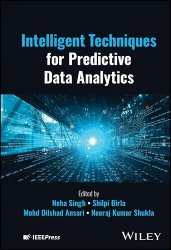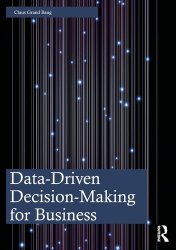- Добавил: literator
- Дата: 24-07-2024, 14:59
- Комментариев: 0
 Название: Intelligent Techniques for Predictive Data Analytics
Название: Intelligent Techniques for Predictive Data AnalyticsАвтор: Neha Singh, Shilpi Birla, Mohd Dilshad Ansari, Neeraj Kumar Shukla
Издательство: Wiley-IEEE Press
Год: 2024
Страниц: 272
Язык: английский
Формат: pdf (true), epub
Размер: 10.1 MB
Comprehensive resource covering tools and techniques used for predictive analytics with practical applications across various industries. Intelligent Techniques for Predictive Data Analytics provides an in-depth introduction of the tools and techniques used for predictive analytics, covering applications in cyber security, network security, data mining, and Machine Learning across various industries. Each chapter offers a brief introduction on the subject to make the text accessible regardless of background knowledge. Readers will gain a clear understanding of how to use data processing, classification, and analysis to support strategic decisions, such as optimizing marketing strategies and customer relationship management and recommendation systems, improving general business operations, and predicting occurrence of chronic diseases for better patient management. Traditional data analytics uses dashboards to illustrate trends and outliers, but with large data sets, this process is labor-intensive and time-consuming. This book provides everything readers need to save time by performing deep, efficient analysis without human bias and time constraints. A section on current challenges in the field is also included. Data mining is the process of discovering meaningful patterns, correlations, and relationships in large datasets using computational algorithms. It involves various steps, including data preprocessing, pattern discovery, and result interpretation, extracting knowledge, and making informed decisions from large and complex datasets. It combines techniques from various domains such as statistics, Machine Learning, Artificial Intelligence, and database systems to explore and analyze structured and unstructured data to gain insights and generate actionable information.









